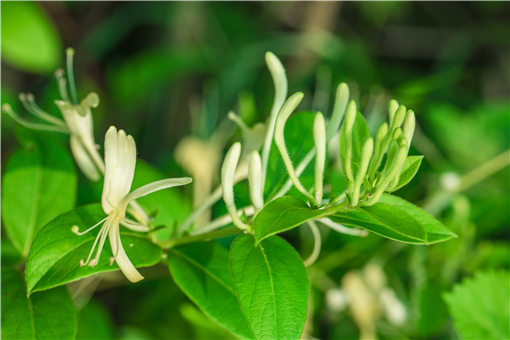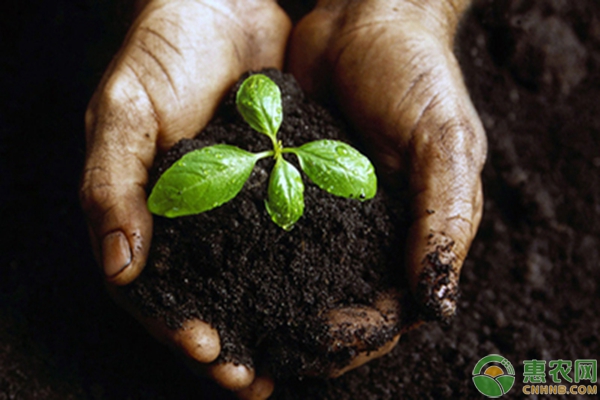What kind of herbs are suitable for growing this spring? These five kinds of prospects are promising!
In recent years, with the continuous improvement of people's concept of physical and mental health, the demand for traditional Chinese medicine in the sales market continues to rise, and there are more and more people planting traditional Chinese medicine. There are a variety of types of traditional Chinese medicine, and the growth habits and growth and development standards are different. So, which traditional Chinese medicine is suitable to grow this spring? These five markets have a bright future!
Which traditional Chinese medicine is suitable for planting this spring

1. Banlangen granule
It has a wide range of application and has the function of clearing away heat and removing fire and removing blood stasis. It is a commodity Chinese herbal medicine, which is commonly found in Ganmao granules, and its leaves can be used as health-preserving tea. Root medicine, no strict requirements for soil, strong adaptability, poor areas, hilly terrain, flat land can be planted, more resistant to low temperature, southern China can certainly spend the winter, can be replanted. It was planted from February to April and harvested from August to October. The whole growth period was 6-7 months, and the long-term yield per mu was 350~400KG. At present, the market price was 250.28 yuan / KG.
Second, tree-shaped honeysuckle tea
In recent years, not only pharmaceutical companies have upgraded the addition of the product, in order to spend into medicine. The demand for drinks such as "Jiaduobao", which is a key raw material, has also continued to increase, resulting in an increase in the use of its products. It can be planted in mountains, hills and flat land, and has strong adaptability. Planted in March to April in spring, a small amount was in full bloom at first, and the next year it reached a high-yielding period. it was planted one year and made a profit for many years. The production of "tree-shaped" honeysuckle tea is higher, the long-term yield per mu is 150~200KG, and the current market price is 150,000,180 yuan / KG.
Third, dry Pinellia ternata
Used as a tuber in medicine. It has the function of resolving dampness, relieving cough and phlegm, reducing adverse reaction and relieving vomiting, and is the key raw material for pharmaceutical factories to produce a variety of phlegm and cough relieving traditional Chinese medicine prescriptions. There are no strict requirements for soil, but it is suitable to grow in sandy soil, which is the most suitable for the growth and development of half-overcast and half-yang natural environment. It can be interplanted with peach trees or tall stalk crops to avoid storing water. It was planted from February to April and harvested from August to September. The whole growth period was 6-7 months, and the long-term yield per mu was 120~150KG. At present, the market price was 700.85 yuan / KG.
Scutellaria baicalensis Georgi
It has the functions of invigorating the spleen and stomach, clearing heat and dampness, nourishing the fetus and removing perspiration. The rhizome is used as medicine. It is necessary to choose to plant in the hilly terrain where the soil layer is thick, loose, rich and with excellent drainage pipes. The seeds will be pre-planted from February to April, and the cultivated "technical planting" will be transplanted from November to November, and will be harvested from October to October in the following year. The whole growth period is 2 years, and the yield per mu is 200~250KG. The current price is 400.45 yuan / KG.
Gardenia jasminoides
5. Yellow gardenia
Using fruit as medicine has the functions of clearing away heat and detoxification and relieving pain, such as wind, fire, toothache, sores, swollen poison, hepatitis, blood in urine, falling and so on. Fruit is also the raw material of melanin in the food industry, which has been used more and more in recent years. Gardenia jasminoides can be planted in poor areas, hilly terrain and flat land, and it is resistant to poverty, drought and drought. From February to April, the seedlings are planted, the fruit begins in the second year, and the third year reaches the peak yield period. It is planted in one year and benefits for many years, and the stem is regularly above 25 years. The sales market recycles fresh and dried slices, and produces fruit 500~600Kg per mu in the peak yield period, with a drying rate of about 30%.
Special attention is paid to the need to integrate local soil, climate and other standards for the cultivation of traditional Chinese medicine. In addition, compared with peanut kernels and other crops, growing traditional Chinese medicine is a very good choice for farmers.
Related
- Fuxing push coffee new agricultural production and marketing class: lack of small-scale processing plants
- Jujube rice field leisure farm deep ploughing Yilan for five years to create a space for organic food and play
- Nongyu Farm-A trial of organic papaya for brave women with advanced technology
- Four points for attention in the prevention and control of diseases and insect pests of edible fungi
- How to add nutrient solution to Edible Fungi
- Is there any good way to control edible fungus mites?
- Open Inoculation Technology of Edible Fungi
- Is there any clever way to use fertilizer for edible fungus in winter?
- What agents are used to kill the pathogens of edible fungi in the mushroom shed?
- Rapid drying of Edible Fungi



